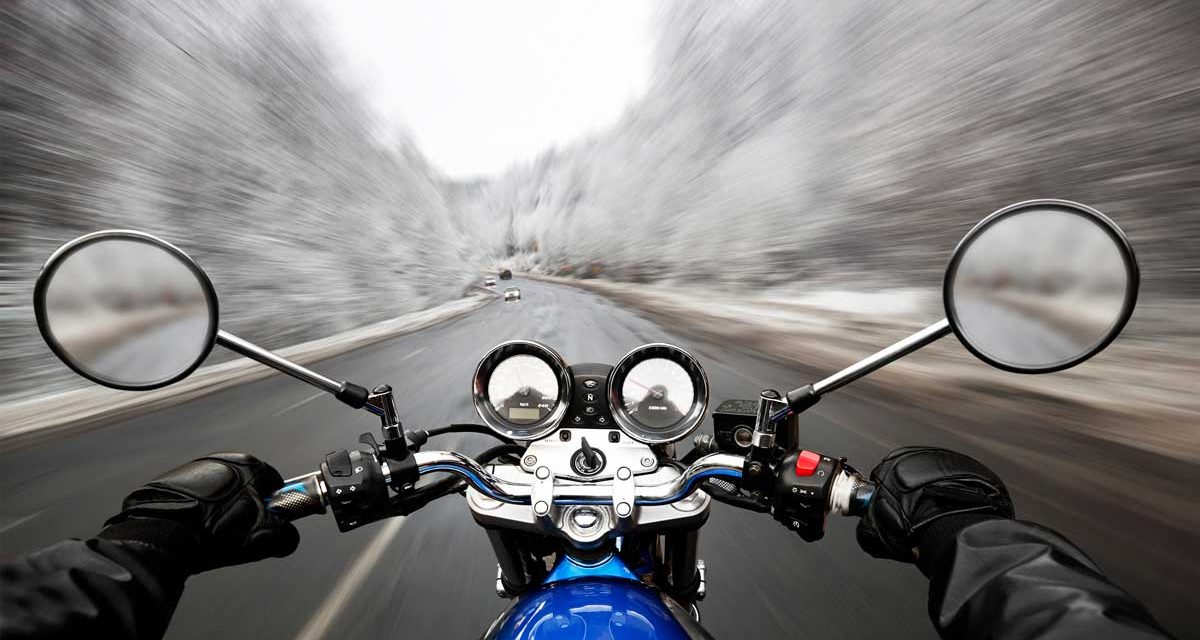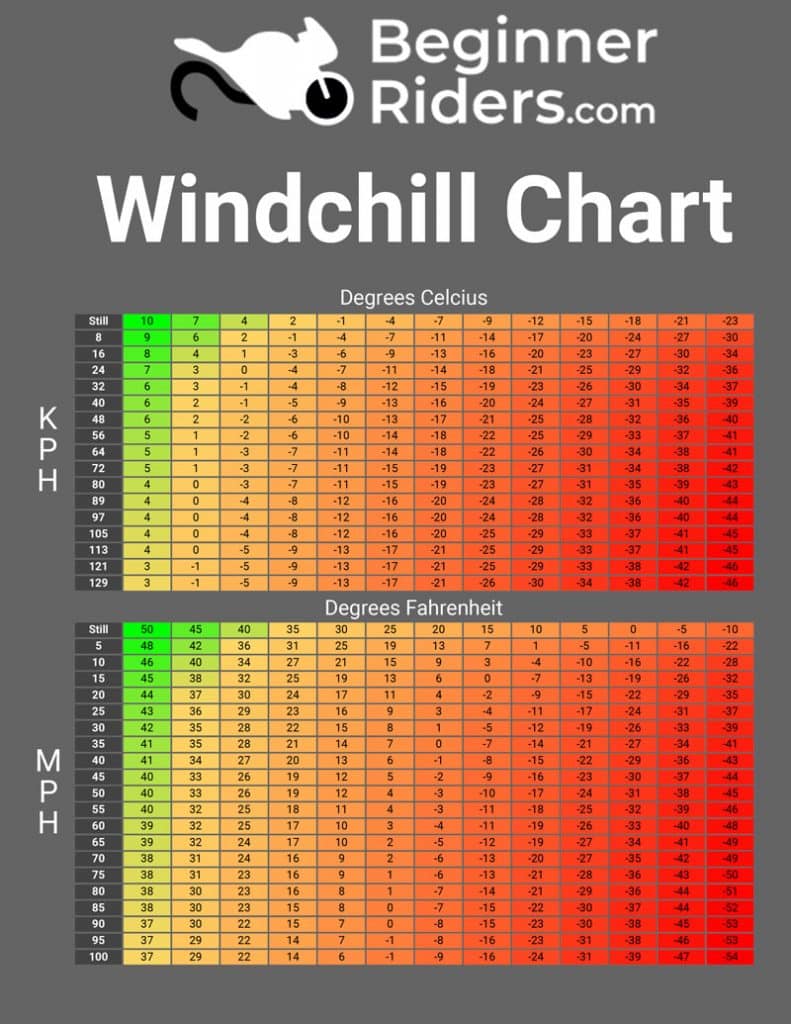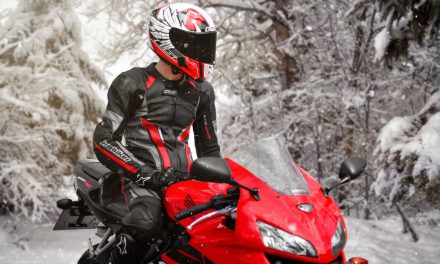Riding a motorcycle comes with many responsibilities. Conscientious riders need the right awareness and the proper gear to ride safely. Not only are the normal issues that come with riding amplified in the winter weather, but it has many issues of its own that cause havoc for bikers every year, especially those who ride into it unprepared.
Knowing the gear that’s available to you to make your ride as safe and comfortable as possible is a must in the midst of all the new challenges that come with riding in the winter, including frostbite from the wind and cold and losing your visibility and control. This is a starter’s guide for this knowledge and responsibility, and hopefully provides a little insight into how to keep yourself safe (and warm) on those cold winter rides.
Gear
Properly equipping yourself for the ride is the first step to staying safe and warm. There are vulnerable spots on your body from head to toe: knowing not only where they are but how to protect them when you’re facing down the freezing winds will ensure that the cold doesn’t cause you discomfort, distract you on the slick roads, or impede your ability to properly control your motorcycle. Some of the gear may seem expensive, but the best alternative to skimping out is probably refraining from riding when the temperature gets too low. Otherwise, some of this stuff is a must.
Head
You know that wearing a helmet is essential to staying safe but purchasing a helmet liner or Balaclava is a great next step to giving yourself added protection in the freezing temperatures. Your neck is the spot most vulnerable to cold on your entire body, so make sure that your jacket or Balaclava seals around your shoulders. Get a liner that has flat seams, made of sturdy but thin and flexible fabric so that your helmet still fits.
Body
When you’re facing the wind on the open road, you become susceptible to the “wind chill factor,” which we’ll go over in a bit. All you need to know for now is that your core faces the wind and gets blasted with cold air faster than your body can replace it with heat. This is why a jacket, heated jacket liner, or over jacket specifically designed for bikers is a must in the winter cold.
Hopefully, you’ve already put on enough base layers to keep the frigid moisture out. But that will never be enough – you need insulated jacket tech, lined with thermal heat sources and protected with some kind of wind-blocking technology (a lot of well-manufactured jacket linings contain a flexible mesh inlaid for that purpose). You need something padded at the problem spots, air-tight in the front, and warming you at all times. Make sure it fits around your riding boots and gloves too: those seals are big problem spots for winter riders.
Hands
This is where it can get dangerous to not have the right gear. You want gloves reinforced for grip and padded on the knuckles since they’ll be facing the wind the entire ride. Glove liners or heated gloves that plug into your jacket can make all the difference in the numbing cold. Make sure they’re made of stretchable fabric that your grip doesn’t have to fight with to maintain your riding position. Stiffness is always a factor in riding; in the winter, it can prove downright hazardous.
A lot of gloves come “pre-curved” too, which means that the fingers are bent in the material itself to more easily stay in the riding position without you having to strain. This improves your comfort in any conditions: in the cold, it can be the essential factor that keeps your hands from stiffening up, which is one of the major issues in lower temperatures.
Legs
Stiffness in the hands isn’t even the worst of your extremity’s problems. When you start getting the shakes from the cold, you’ll feel it in your legs. Losing total control over your entire ride won’t be far behind.
Even if you don’t invest in special heated pants, overpants that pull over your shoulders can go over your normal clothes and give you the protection you need. The most important thing is to make sure the leg holes seal around your legs. Otherwise, moisture from the road can creep onto your legs and create damp spots that you can’t do anything about for hours, chilling you the entire time.
Investing in heated, flexible pants (or even full one-piece suits of riding clothes) is essential for blocking wind and keeping you insulated from the wet road. Fabric that encourages moisture to stay away and circulation to stay in can make all the difference.
Feet
Globs of water and snow coming off the road can seep into your shoes after a while. It’ll take one road trip with cold toes to convince you to invest in heated socks (some plug into heated pants), or heated insoles. Some brands plug right into your motorcycle’s battery, ensuring that your feet have a layer of heated protection between them and the thin, soaked material of your shoes. Get them curved to fit your natural foot shape to keep the dreaded stiffness away as long as possible.
Dangers
Without the proper gear, the low temperatures, moisture, and wind combine to cause all kinds of physical problems for winter riders. There’s always the extreme side of things: getting hypothermia from ungloved fingers facing the wind, for instance. But there are many more subtle ways that the winter cold can be dangerous to you on the road.
Just being improperly padded or having a heat source go out can let cold seep into your core or your hands and legs. Some riders have to pull over because they can’t stop shivering, or they find their extremities becoming weak from numbness. Losing your coordination on the road can be fatal. Becoming distracted, lightheaded, or confused on the road is a clear sign that you need to upgrade your gear before you get hurt.
Another consideration to make when riding motorcycles in the winter is that the conditions of the bike itself change depending on the weather. You may not notice low tire pressure in the summer, but on the slick sleet of the winter roads, low tires can much more easily lose their traction. The tires are cold to begin with, making them prone to slipping.
You may also think that wearing more clothes is always better but your goal should really be the right clothes, made out of the right material and put on in the right layers. You need to create a good balance between the heat that’s leaving your body naturally and the cold that’s coming in and speeding up that process. If you’re sweating under all those layers, that moisture can make the cold more dangerous by building up close to your body in vulnerable spots, encouraging hypothermia.
The bottom line: make sure you put your clothes in layers that all have moisture-wicking technology built-in, so the sweat doesn’t freeze you faster than the wind. Get multiple thin layers of fabric made of flexible material and as many insulating and heat-giving plug-ins as you can afford.
Motorcycle Wind Chill Chart
We all know that riding in the winter causes the wind to hit your core, promoting accelerated heat loss that gives your body the feeling of being cold. The interesting thing though is that it’s just that: a feeling. The air can’t get physically colder by blowing at you, but because you’re losing your body’s naturally produced heat at a faster rate as you drive faster into the wind, your body thinks it’s getting cold. And that, as far as your health is concerned, is about the same as being cold.
The Wind Chill Chart is a metric that helps you sort all this out, telling you the temperature you’ll feel at what speed and in what starting air temperature. Unfortunately, there’s no universal standard for calculating this. In fact, the math will change depending on which country you ask. But most riders don’t need to know the exact effect of the wind chill, more than just needing to be aware that it exists.
What do you do about it? This is where gearing up really becomes an art. On your legs, you want snug material like wool to lock you in. You want to layer yourself on top with synthetic material, thin, moisture-wicking, and flexible. You want to make sure the seals around your ankles and cuffs are tight and fit over your gloves and boots. Getting all your fasteners, scarfs, drawstrings, and so on fully sealed is essential to keeping the environment under your clothes controlled and dry.
Whether it’s from wind, icy roads, or improper clothing, there are many dangers to riding a motorcycle in the winter. But with the proper planning and preparation, it doesn’t have to be dangerous, or even uncomfortable. Even just a warm meal before you set out can set you off right. It may be the added warmth that makes the crucial difference between a comfortable ride and a risk not worth taking.






